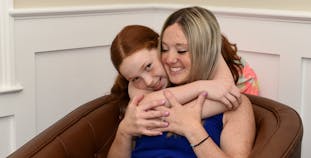November 16, 2022
Advance Online

Advance Online
Reaching Out
When Michel Tarabocchia was in her darkest moments, she found NPF.

When Michel Tarabocchia was in her darkest moments, she found NPF.
We use cookies to offer you a better experience and analyze our site traffic. By continuing to use this website, you consent to the use of cookies in accordance with our Privacy Policy.